Whatever Emperor Shah Jahan wanted to do, he managed to build a great monument. It became a monument to the builders and architects of the Mughal Empire.

1/11
© RIA Novosti . Евгений Пахомов
Whatever Emperor Shah Jahan wanted to do, he managed to build a great monument. It became a monument to the builders and architects of the Mughal Empire. The construction began in 1632 and lasted for more than 20 years. According to historical records, it involved over 20,000 workers
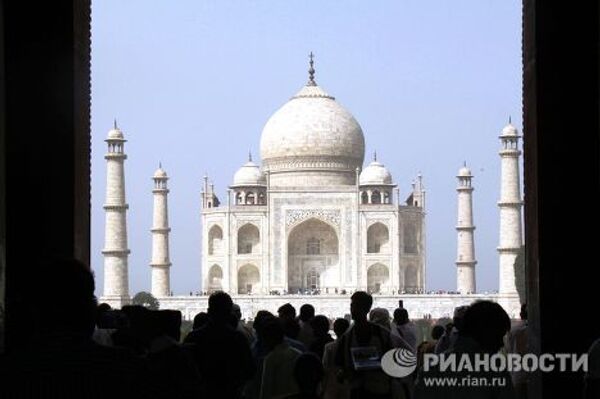
2/11
© RIA Novosti . Yevgeny Pakhomov
Thousands of tourists from around the world visit the Taj Mahal daily, with the annual number of visitors exceeding two million people. Tour guides enthusiastically tell them the love story of Mughal Emperor Shah Jahan and his wife, a symbol of which the Taj is perceived to be. According to the legend, which could well be one of the Arabian Nights tales, the future emperor saw a simple girl in a spice market in Agra, the capital of the Mughal Empire, and fell in love with her

3/11
© RIA Novosti . Yevgeny Pakhomov
The prince married the girl, who was named Mumtaz Mahal, a name that means “beloved ornament of the palace.” She became the emperor’s best friend and adviser rather than simply a wife. During their 19-year marriage she gave birth to 13 children and died giving birth to their 14th child in 1631. The mourning emperor ordered a mausoleum to be constructed on the Yamuna River that would become the most beautiful building in the history of the world. To commemorate his beloved he called the mausoleum the Taj Mahal, or the Crown of the Palace. Another version says that the mausoleum’s name is an abbreviation of Mumtaz (Mumtaj) Mahal
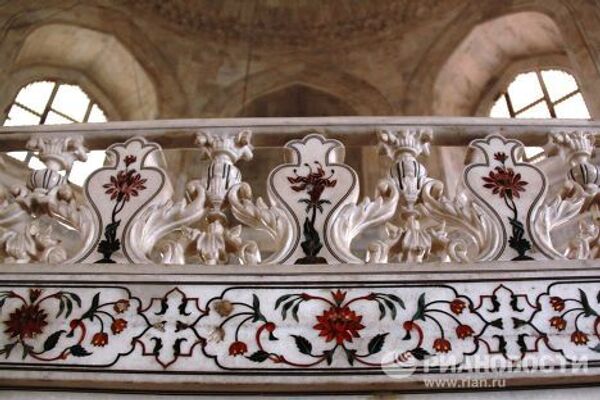
4/11
© RIA Novosti . Yevgeny Pakhomov
The builders paid special attention to the interior decoration. There are Mumtaz Mahal’s and Shah Jahan’s cenotaphs at the center of the mausoleum, with jali screens carved out of solid marble and decorated with delicate ornaments around the cenotaphs. Photographing is not allowed inside the Taj, but a RIA Novosti photo correspondent was granted permission to take a picture of a decoration element. These flowers were inlaid with natural stones, including lazurite, agate, and carnelian. All in all, the ornament consists of more than 40 types of stone, with each flower consisting of several dozen elements

5/11
© Sputnik / Yevgeny Pakhomov
Shah Jahan gave India a number of wonderful buildings, for which he is also known as “badshah memar,” or Padishah the Builder. The following buildings were constructed on his orders: the Red Fort in Delhi, the Jama Masjid of Delhi, one of India’s most famous mosques and the Shalimar Gardens of Lahore. The Agra Fort was completed during his rule. Each one of the buildings was meant as a monument, first of all, to Shah Jahan himself. The most famous of these is Taj Mahal
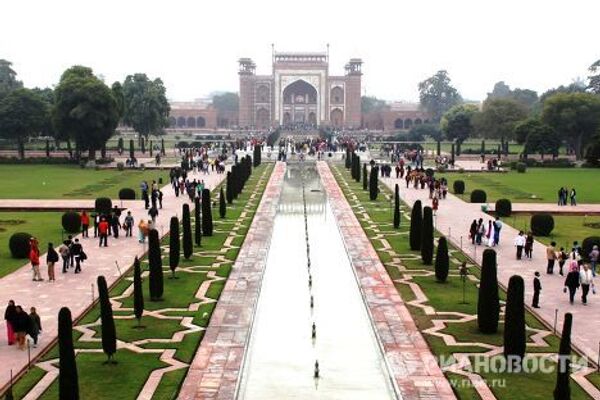
6/11
© RIA Novosti . Yevgeny Pakhomov
Islamic mystics have contributed their mite to the disputes on the Taj Mahal, seeing a mystical intention in its construction. They believe that the territory around the mausoleum is arranged so as to resemble the Garden of Eden. Having placed the mausoleum in the center of an earthly Eden, Shah Jahan staked a claim to a place in the heavenly Eden, and not only for his wife. Some people believe the emperor intended to have a black marble copy of the Taj Mahal constructed for himself on the other side of the Yamuna River
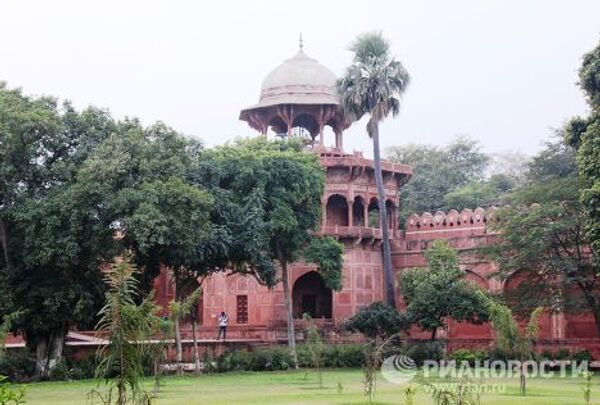
7/11
© RIA Novosti . Yevgeny Pakhomov
The entire complex is encircled by a wall with tracery towers, which tourists tend to unjustifiably overlook
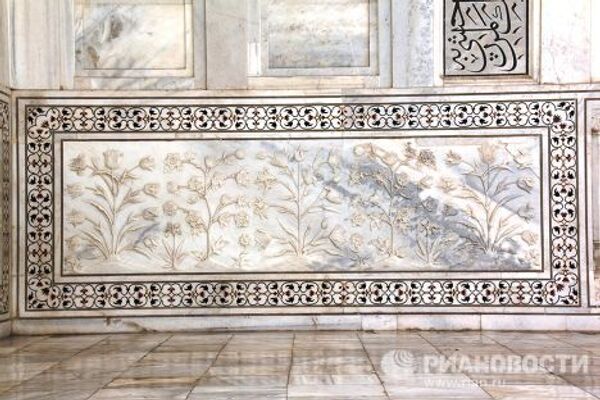
8/11
© RIA Novosti . Yevgeny Pakhomov
The mausoleum’s walls are decorated with quotations from the Koran and marble carvings, which mainly consist of flowers and are in fact reminiscent of paradise

9/11
© RIA Novosti . Yevgeny Pakhomov
The Taj Mahal has a complex of buildings of pink sandstone around it, each of which can be a historical monument. These buildings include a mosque, which is still active, and pilgrims’ premises
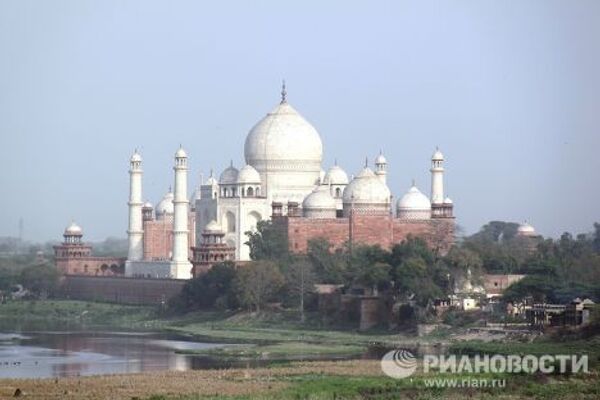
10/11
© RIA Novosti . Yevgeny Pakhomov
The Agra Fort offers a magnificent view of a bend in the Yamuna River where the Taj Mahal is located and where Shah Jahan was not destined to return. When Shah Jahan died, Emperor Aurangzeb permitted his father’s body be buried in the Taj Mahal and refused to build a new mausoleum for him. Shah Jahan was buried beside his favorite wife Mumtaz Mahal’s tomb. Ironically, the dethroned emperor’s tomb and cenotaph are the only elements that disrupt the strict symmetry of the wonderful architectural complex that was constructed on his order

11/11
© RIA Novosti . Yevgeny Pakhomov
The new monarch placed his father under house arrest. The most widely accepted version says that Shah Jahan was imprisoned in the Agra Fort on the other side of the Yamuna River. Tour guides still show the tower (in the photo) and adjoining premises where the famous Padishah the Builder spent the last eight years of his life



